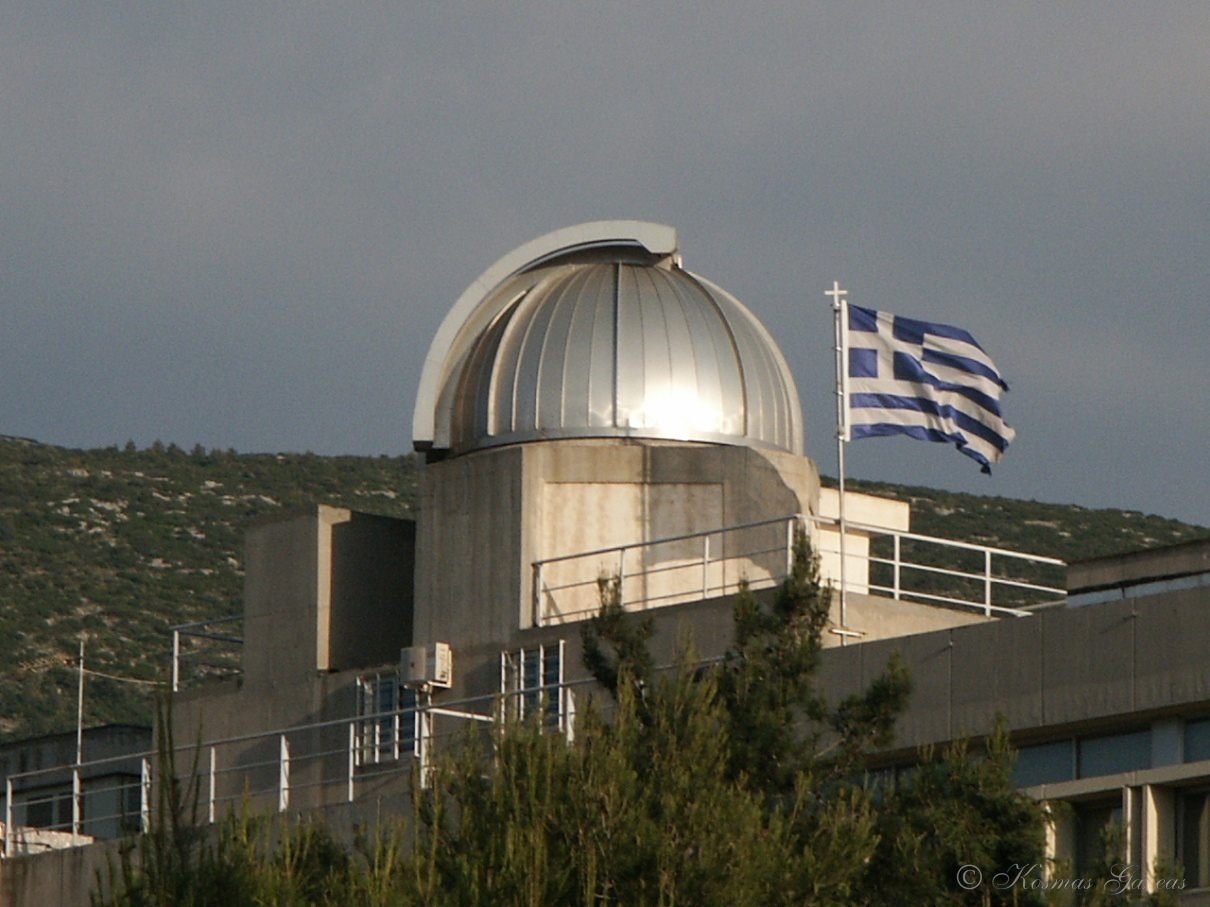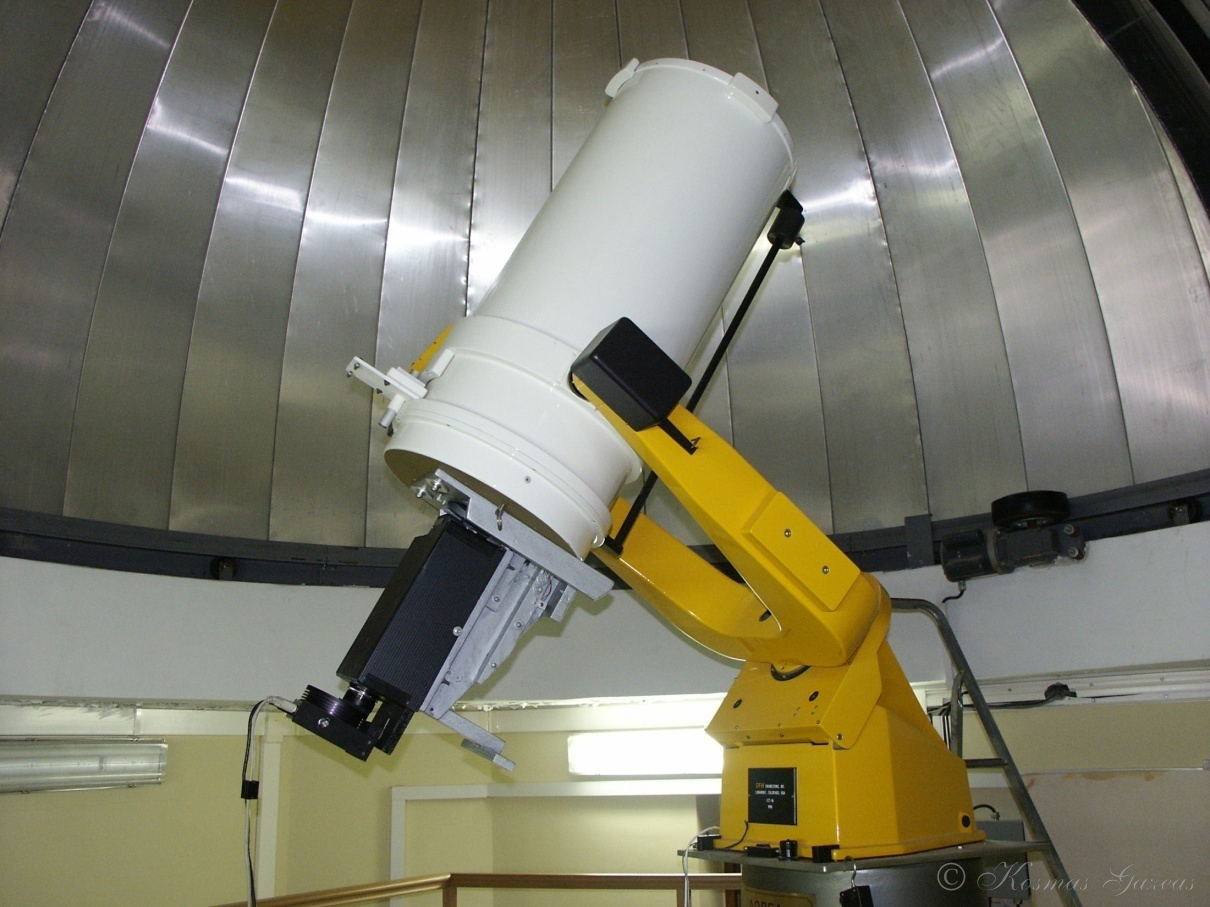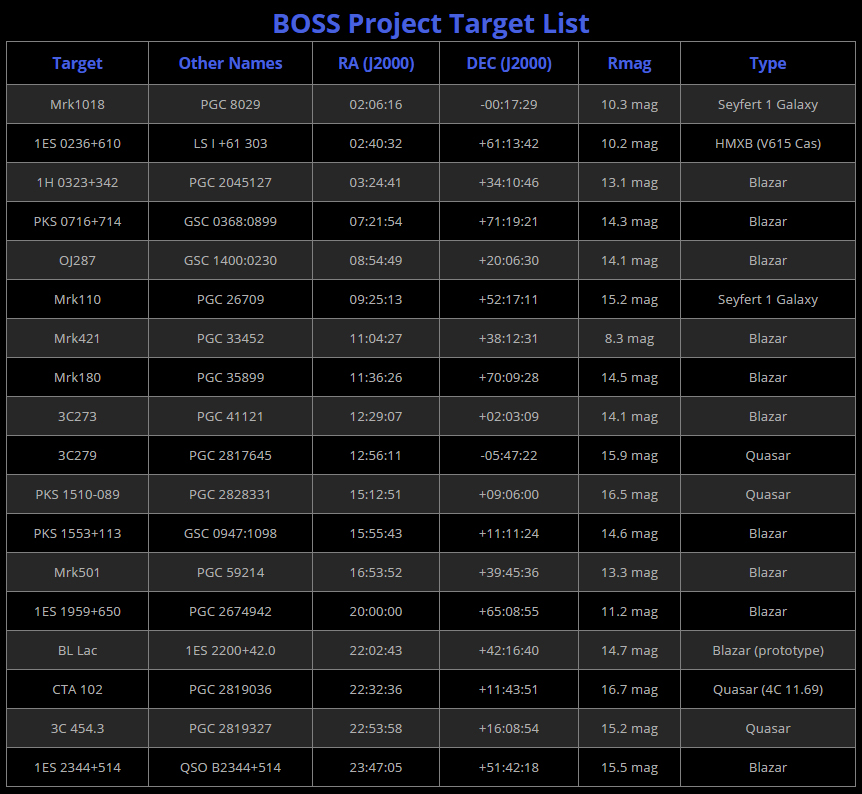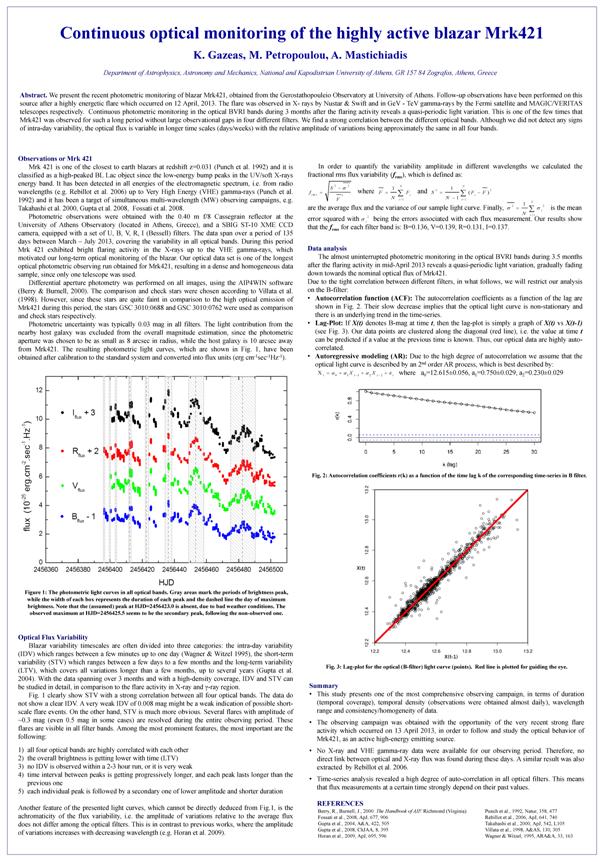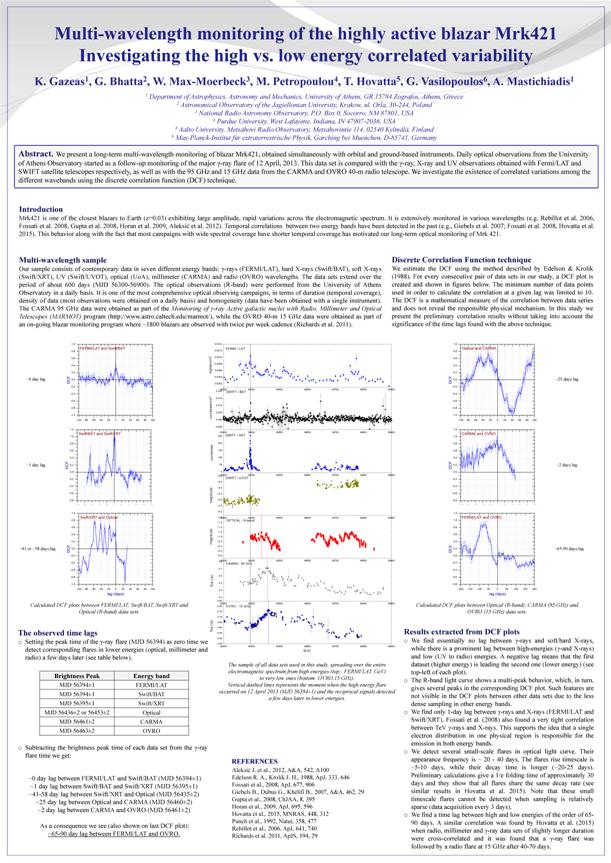Blazar Optical Sky Survey (BOSS) Project
Blazar Optical Sky Survey (BOSS) Project is an optical monitoring program, initiated on April 2013 by Dr. Kosmas Gazeas at the University of Athens. It aims at monitoring the optical variability on active Blazars, in parallel with other multi-wavelength observations obtained from space and ground-based observatories.
Blazar variability timescales are often divided into three categories: the intra-day variability (IDV) which ranges between a few minutes up to one day (Wagner & Witzel 1995), the short-term variability (STV) which ranges between a few days to a few months and the long-term variability (LTV), which covers all variations longer than a few months, up to several years (Gupta et al. 2004).
Instruments
BOSS Project utilizes the 0.40 m f/8 robotic and remote controlled telescope at the University of Athens Observatory, which is equipped with a ST10 XME CCD camera and a UBVRI filter set (Bessell specifications). Continuous observations every night are not always easy to occur, mainly due to weather conditions.
Team members
BOSS Project is a collaboration between the University of Athens (Greece) and several other Institutes worldwide. Among them, the major collaborators are:
Sample Light Curves
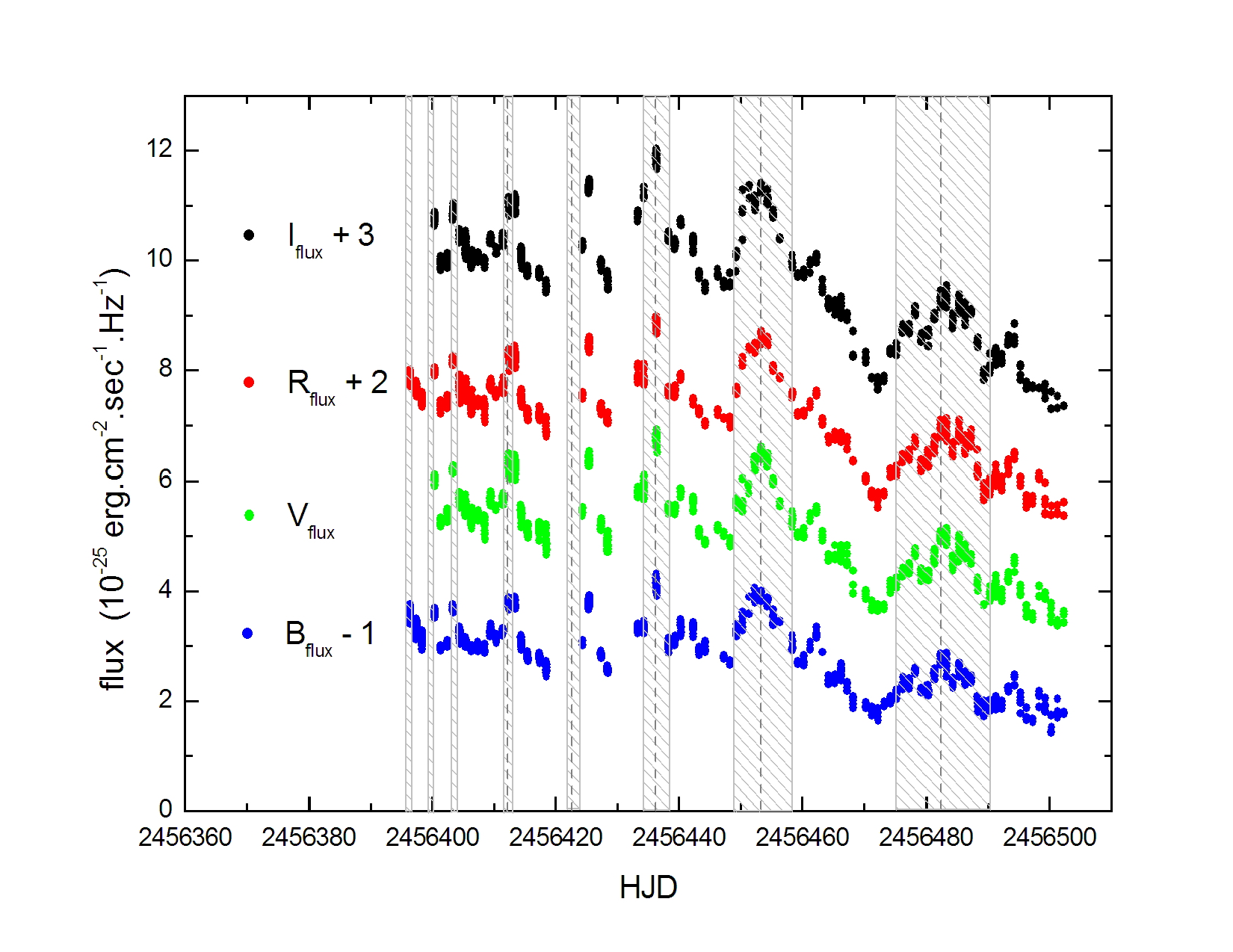 The photometric light curves of Mrk421 in all optical bands. Gray areas mark the periods of brightness peak, while the width of each box represents the duration of each peak and the dashed line the day of maximum brightness.
The photometric light curves of Mrk421 in all optical bands. Gray areas mark the periods of brightness peak, while the width of each box represents the duration of each peak and the dashed line the day of maximum brightness.
 Continuous monitoring of Mrk421 for a total of 370 days (2013-2014) in R-band. Luminosity variations of this highly active blazar can be cross-correlated with orbital data and/or other monitoring campaigns in a wider range of energies.
Continuous monitoring of Mrk421 for a total of 370 days (2013-2014) in R-band. Luminosity variations of this highly active blazar can be cross-correlated with orbital data and/or other monitoring campaigns in a wider range of energies.
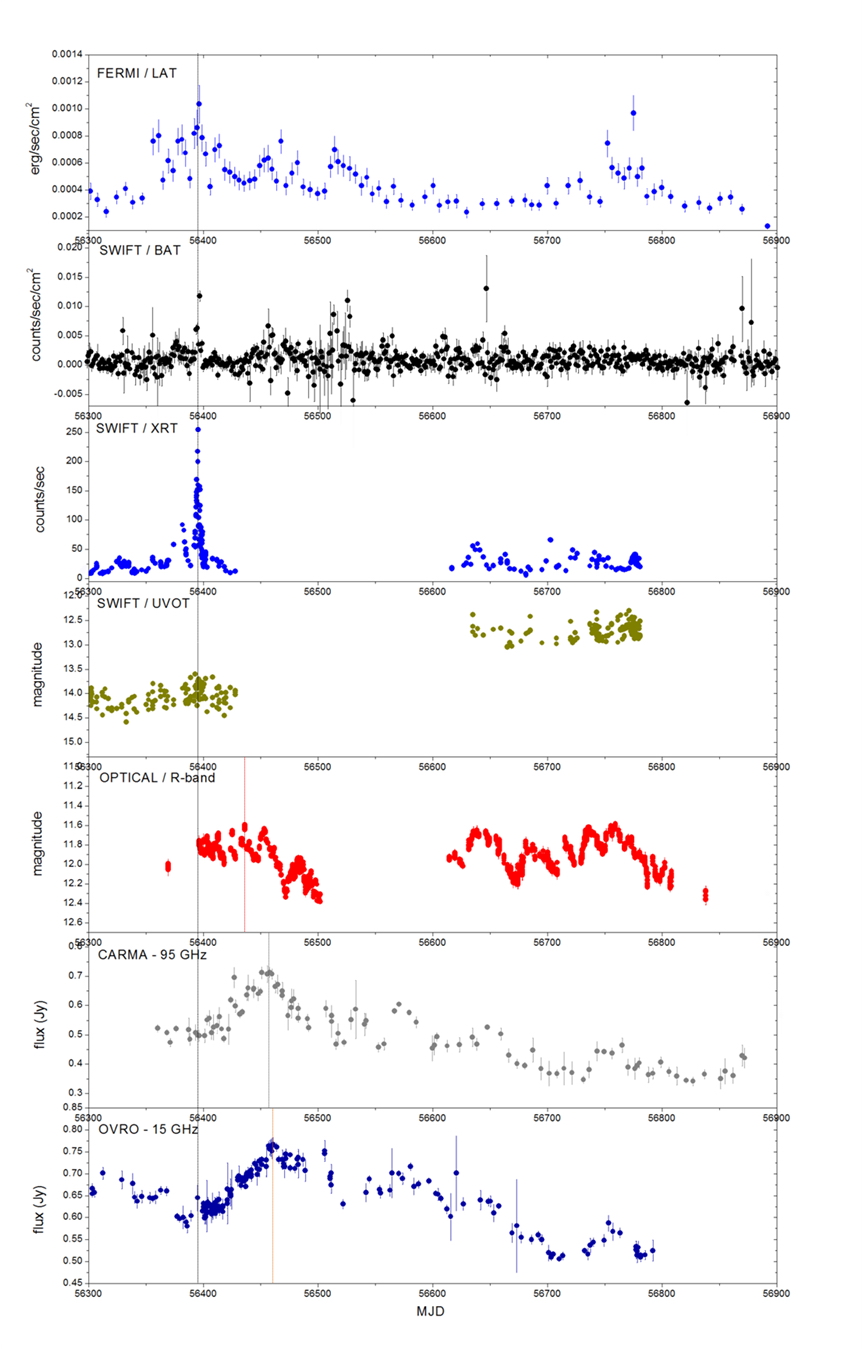 Multiband sample of Mrk421 data, spreading over the entire electromagnetic spectrum
from very high energies (gamma rays on top) to very low ones (radio signal at bottom). Vertical dashed lines on the left represent the moment when the high energy flare occurred on 12 April 2013 (MJD 56394)
and the corresponding signals detected a few days later in lower energies. Time lag is detected after comparing these signals, as a result of electron cooling mechanism.
Multiband sample of Mrk421 data, spreading over the entire electromagnetic spectrum
from very high energies (gamma rays on top) to very low ones (radio signal at bottom). Vertical dashed lines on the left represent the moment when the high energy flare occurred on 12 April 2013 (MJD 56394)
and the corresponding signals detected a few days later in lower energies. Time lag is detected after comparing these signals, as a result of electron cooling mechanism.
Target list
In the frame of BOSS Project, the following targets are under monitoring schedule:
Publications
Publications and scientific announcements released after the results of BOSS Projects are:


